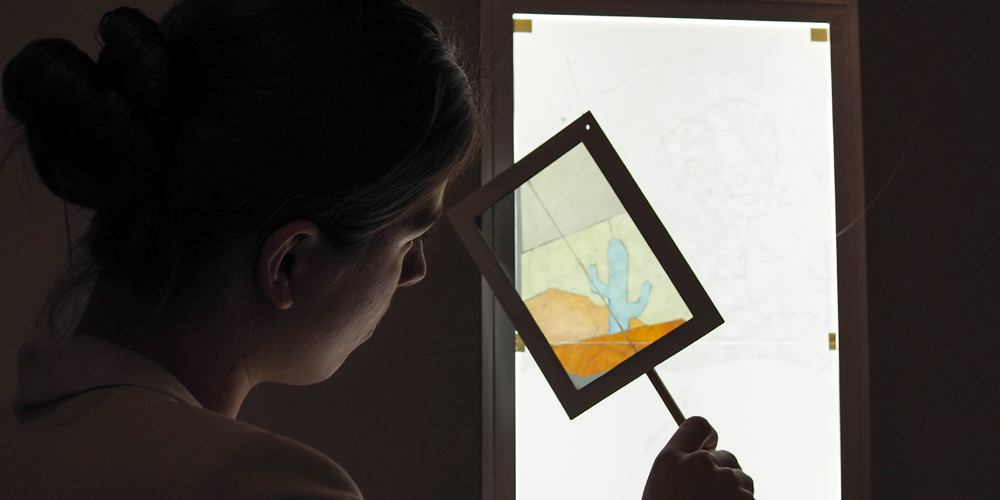Honorary Mention
Why the title nonvisual? “My image emerges in a realm that’s invisible to us, a gray area in which science (physics) meets material. To shift this encounter into the visible realm, I need two things: light and the refractive properties of the material. Plus, a space takes shape in this flat object; something virtual resonates within it, something intangible that, although it’s ‘not there,’ leaves behind the impression of real dimensions.” (Lisa Buttinger)
nonvisual-art is an image that, at first glance, seemingly doesn’t even exist optically. But upon closer inspection, an enchanted world appears—a hidden domain brought to light by light. The image materializes via the refraction of light on the surface of elements made of cellophane foil and air bubbles trapped in an adhesive substance. The positioning of these elements on an LED panel seems to have occurred randomly but is actually the result of precise calculation, and this yields a surprising visual experience. Lisa Buttinger summons forth the physics inherent in these common, everyday disposable products. She conducted experimental research on the light-refracting characteristics of these materials and thereby turned “natural science” into a pictorial tool. In going about using it, she works with various modes of seeing and perceiving, which is what makes the invisible images visible in the first place. A polarizing filter refracts “the unseen spectrum” into colors. Then, when installation visitors wearing 3-D glasses look at her work, they behold a spatially scaled configuration that virtually draws the viewer into its midst. Lisa Buttinger painstakingly crafts her cellophane foil images on a computer and then structures their arrangement on an LED panel so as to bring out their extraordinary qualities. Even the slightest change in positioning on the panel’s surface produces a change in the invisible image. She literally custom-builds her colorful, enchanted world. Lisa Buttinger created this work—presented here in front of an LED panel—in conjunction with a design project for an advanced course in image processing she took in 2017. A theoretical investigation of the topic “illusion” for her diploma thesis constituted the basis of this artistic work.
Text: Tereza Szente
Credits
Photo: Ars Electronica / Martin Hieslmair
Lisa Maria Buttinger (AT) was born in 1997 in Braunau, Upper Austria. She attended Schalchen Elementary School 2004-08, Braunau Preparatory School 2008-12, and then Linz High School for Artistic Design, from which she graduated in April 2017. While at prep school, an enriched program for gifted youngsters enabled her to also attend Schloss Traunsee Academy. In 2014, in conjunction with a mandatory internship, she got four weeks of experience in the private sector at media.dot.
Jury Statement
One can never know from where the next groundbreaking idea comes. What will start the next wave of artistic expression? And what else might this lead to? nonvisual-art was passed over to the S+T+ARTS Prize jury from the u19 category and it was immediately agreed that this project deserves an Honorary Mention. It is strong in its curious investigation while at the same time it is controlled and very open to its “handmade” expression. Not only did Lisa create enchanted images, she also invented her own new media with everyday materials. She used her knowledge of natural science and turned it into an artistic tool where new, beautiful, almost magic images appear. This project is a really good example of how artistic exploration can lead to new expressions, new innovative tools brought to us by a very young artist who has received the right support to enable her to follow and develop her artistic skills and curiosity.



